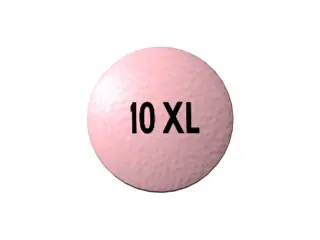| Package | Dosage | Price | Price per Dose | |
|---|---|---|---|---|
| Dosage: 2,5mg | ||||
| 240 pill | 2,5mg | £198.41 | £0.83 | |
| 120 pill | 2,5mg | £100.38 | £0.84 | |
| 90 pill | 2,5mg | £80.30 | £0.89 | |
| 60 pill | 2,5mg | £55.50 | £0.92 | |
| 30 pill | 2,5mg | £29.52 | £0.99 | |
| Dosage: 5mg | ||||
| 360 pill | 5mg | £526.75 | £1.46 | |
| 240 pill | 5mg | £356.67 | £1.49 | |
| 180 pill | 5mg | £274.00 | £1.52 | |
| 120 pill | 5mg | £186.60 | £1.56 | |
| 90 pill | 5mg | £146.44 | £1.63 | |
| 60 pill | 5mg | £102.74 | £1.71 | |
| 30 pill | 5mg | £55.50 | £1.83 | |
| 20 pill | 5mg | £38.96 | £1.96 | |
| 10 pill | 5mg | £21.25 | £2.10 | |

Oxybutynin Description
Overview of Oxybutynin
Oxybutynin is a medication primarily used to treat overactive bladder symptoms, such as frequent urination, urgency, and urge incontinence. It belongs to a class of drugs called anticholinergics or parasympatholytics. By relaxing the muscles in the bladder, oxybutynin helps to increase the storage capacity, reducing the frequency of sudden urges to urinate. This medication is available in various forms, including tablets, extended-release tablets, transdermal patches, and syrup, providing flexibility for patient preferences and needs.
How Does Oxybutynin Work?
The active ingredient in oxybutynin works by blocking the parasympathetic nerves that stimulate bladder contractions. It inhibits the action of acetylcholine, a neurotransmitter responsible for signaling bladder muscles to contract. As a result, the bladder muscles relax, allowing for better control over urination. This mechanism significantly improves quality of life for those suffering from symptoms that interfere with daily activities.
Benefits of Using Oxybutynin
Many patients find oxybutynin effective in managing their overactive bladder symptoms. It provides relief from frequent and urgent urination, reduces episodes of incontinence, and improves sleep quality by decreasing night-time urination issues. Additionally, because the medication comes in different formulations, patients can choose the one most suitable for their lifestyle. Extended-release tablets or patches often cause fewer side effects and allow for once-daily dosing, enhancing adherence to the treatment plan.
Possible Side Effects and Precautions
While oxybutynin is generally well-tolerated, some users may experience side effects. Common issues include dry mouth, dizziness, constipation, and blurred vision. In some cases, the medication might cause urinary retention or cognitive disturbances, especially in older adults. It is crucial for patients to inform their healthcare provider about all pre-existing conditions and medications to avoid adverse interactions. Regular monitoring is recommended to ensure the medication's effectiveness and safety.
Patient Experience and Effectiveness
Patients who follow their prescribed dosage often report noticeable improvements in their symptoms within a few days to weeks. However, individual responses can vary. Some may experience minimal benefits or intolerable side effects, prompting a need for dosage adjustment or alternative treatments. Consulting with a healthcare professional helps tailor the therapy to each patient's unique needs. Overall, oxybutynin remains a trusted choice for managing overactive bladder, offering significant symptom relief for many.
Usage and Administration Tips
To maximize benefits and minimize side effects, it's essential to follow the prescribed dosing schedule. Taking extended-release tablets with food can help minimize gastrointestinal discomfort. If using the transdermal patch, applying it to clean, dry, and hairless skin, rotating sites, and avoiding areas with cuts or irritation enhances adherence and reduces skin reactions. Patients should avoid abrupt cessation without medical advice to prevent relapse of symptoms. Consistent use is key to achieving the best outcomes.
Conclusion
Oxybutynin remains a reliable medication for those suffering from overactive bladder. Its ability to relax bladder muscles helps restore control and improve daily comfort. Proper use, attentive management of side effects, and regular consultations with healthcare providers contribute to optimal treatment success. As with all medications, individual experiences may differ, and ongoing communication with a healthcare professional is essential for safe and effective therapy.

